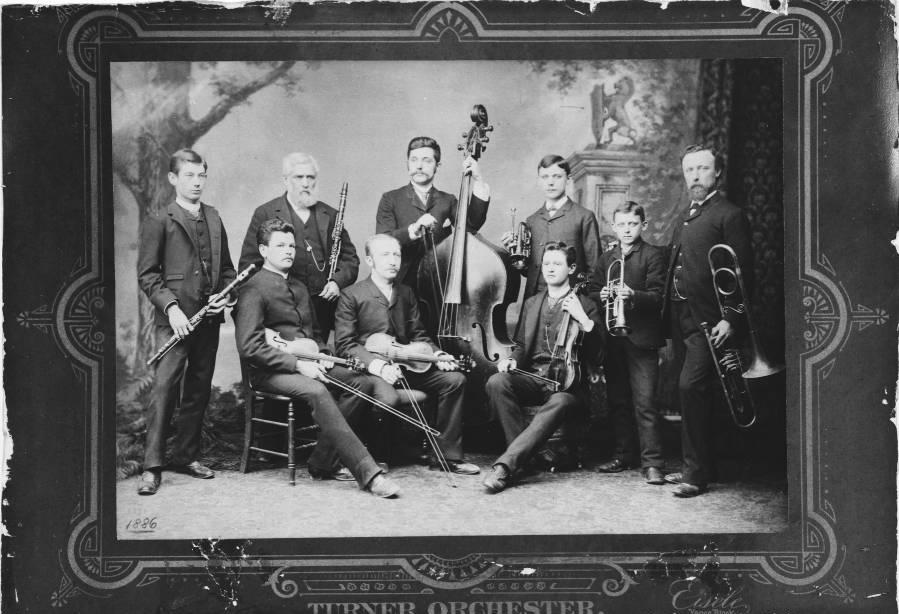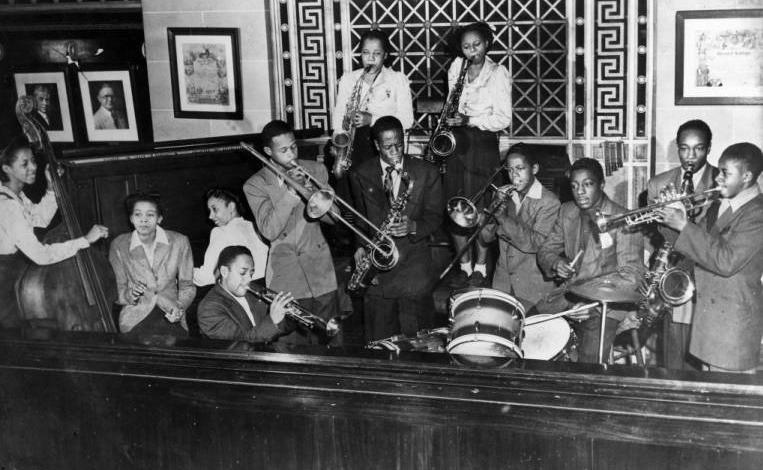Professional bands hired to perform for public and private social dances began to flourish in Indianapolis during the 1880s. Groups such as the Orchestra, Lyra Society Orchestra, First Turner Orchestra, and Catalano Family Orchestra played mixtures of European classical and American theatrical music to accompany waltzes, marches, polkas, and other popular period dance types. Instruments commonly used included brass and woodwind instruments, harp, violin, banjo, accordion, drums, and piano. Public venues included social clubs, hotels, theaters, saloons, and parks.

The 20th century saw the emergence of and dance bands, which evolved into swing and big band ensembles through the 1930s, 1940s, and 1950s. Long-running venues for jazz-derived bands included Riverside Park, Broad Ripple Dance Pavilion, Casino Gardens, Jack-O-Lantern Gardens, Walnut Gardens, Southern Mansion, , , , Walker Ballroom, the , , and all major hotels and movie theaters. Memorable bands included the Russell Smith Orchestra, Clay Military Band, Reginald Duvalle Orchestra, Hoosier Sextet, Wisdom Brothers, Patent Leather Kids, Brown Buddies, Varsity Red Hots, Columbia Club Orchestra (featuring Hoagy Carmichael), and orchestras headed by Laurence “Connie” Connaughton, Emil Seidel, Charlie Davis, Duke Hampton, Virgil Moore, Louis Lowe, Arnold Peek, Red Hufford, Danny Daniel, Charlie DeSautelle, and Amos Otstot.
Rock ’n’ roll combos were popular from the 1950s through the 1970s at teen and young adult dances. Instrumentation included electric guitar, electric bass, trap drum set, electronic piano and organ, tenor or alto saxophone, and lead and background vocalists. Groups such as Johnny and the Pyramids, Downbeats, Crowns, Blue Angels, Danny Dollar, Five Stars, Gary Gillespi, Turbans, Rockin’ Tones, Keetie and the Kats, Monograms, Swingin’ Lads, Sir Winston and the Commons, Boys Next Door; Chosen Few, Dawn Five, and Sounds Unlimited performed at area nightclubs and for dances at Whiteland Barn, Westlake Beach Club, South Side Armory, and numerous drive-in theaters, restaurants, swimming pools, shopping centers, churches, and neighborhood community centers.

Youth-oriented local dance bands rapidly diminished in number during the 1970s and 1980s as dance promoters increasingly used recorded music featuring national artists, and teen popular music tastes fragmented into sub-genres of , soul, rock, punk, pop, thrash, hip-hop, and rap performed in venues where audience dancing was sporadic and secondary to the performance.

Help improve this entry
Contribute information, offer corrections, suggest images.
You can also recommend new entries related to this topic.